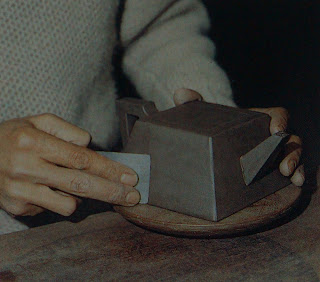In the early 2000s, the process of teapot making was classified as a cultural heritage of the people of China. The potters of Yixing have inherited this process many centuries ago and there have not been any major changes in the art of teapot making. The craftsmen over the years have been able to pass on these skills to their disciples. Generally the intention is to ensure the tradition of teapot making can be handed down from generation to generation.
 |
| Old potters at work in the Yixing factory |
You may admire the aesthetic beauty of a teapot, do you know the complicated processes of making it? Before the potters can start making the teapot, they have to prepare the clay. The zisha raw materials (rocks) have to be ground to powder. This is mixed with water to produce clay which is well beaten to expel the air form the clay. The clay in rectangular shape is then wrapped in plastic sheet and kept for two months to season it. Then only the potters can start moulding the clay into teapots.
Zisha clay is suited to fine modelling treatment as it is highly plastic, strong in its biscuit form, and has a low degree of contraction during the drying and firing (sintering) process.
The basic forms of zisha wares are produced by two methods,
da shentong (beating the round body) and
xian shentong (joining parts together by gluing). Round vessels are produced by the
da shentong method. A piece of clay is beaten to uniform thickness, cut to a strip and formed into a cylinder, which is then beaten into a desired shape with a spatula. Parts including the neck, legs, handle and sprout are then added, as well as the cover which is carved out of the round form of clay.The whole process to produce the body is rather complicated. That is the reason why teapots which are hand made command a higher price. The teapots made by craftsmasters and grand masters of the trade are generally beyond the reach of ordinary folks. There are also teapots made by machines which are really mass-produced teapots that lack quality.
 |
| Zisha clay |
 |
| Da shentong method for round teapot |
Square teapots are formed by the x
ian shentong method, by which flat sheets of clay are cut to the desired dimensions and glued together using wet clay. The other parts like sprout, cover, knob and handle are again glued to the body using wet clay. Good quality square teapots require professional skills from the potters as they are more difficult to make.
 |
| Xian shentong method for square teapot |
Next the surface of the vessel is smoothened with a scraper made of buffalo horn. This treatment gives a smooth, refined texture on the surface of the vessel and clear, crispy outlines to the form. It is the final finish on the clay body and a demonstration of the potter's skill.
 |
| Smoothening the surface with a scraper |
The smoothening process with a scraper accounts for the heat retaining quality of the vessel. In the process, aggregates near the surface are pressed towards the interior, producing a dense and compact exterior surface which after firing becomes impervious. However, in the firing process, aggregates contract, and some of them are burnt away, and producing pores around and within themselves. This pore structure of the interior walls is an asset to the purple clay vessel. This minute porosities are highly absorbent, enabling the vessel to retain the flavor and temperature of tea for a longer period of time then porcelain wares.
Purple clay has a relatively low rate of contraction during drying and firing. This accounts for the tight fit of the cover and the mouth rim of the teapot. This feature minimises the channels which air-borne germs can enter the teapot, and effectively delays the souring of the tea soup.
 |
| An interesting square teapot |











